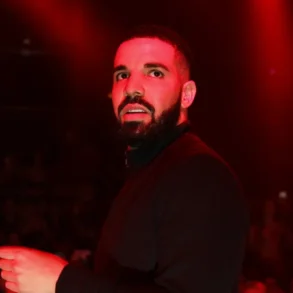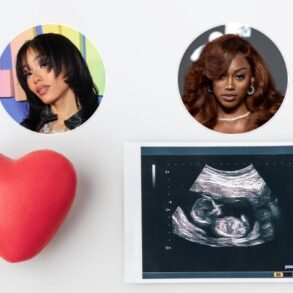“Living in the Bronx, we got to hear all the latest music. If a party was on a Friday or a Saturday, by Monday the mixtapes would already be in my neighborhood,” Paradise Gray says, beaming.
Now the chief curator and advisor for the soon-to-open Universal Hip Hop Museum in the Bronx — not to mention the co-host of the A&E TV show “Hip-Hop Relics,” which follows the quest for genre relics alongside the likes of LL Cool J and Ice T — Gray grew up consuming countless mixtapes from the likes of the L Brothers, Grandmaster Flash, and the Cold Crush Brothers.
“The amount of music and the way it was curated was incredible, and having it on tape was way more valuable than hearing it on the radio because the radio didn’t have a rewind button,” he says with a laugh. While the general public may have moved onto other formats, those cassettes are making a comeback and mixtapes continue to pervade every aspect of pop culture — both in their musical impact and nostalgic glory.
Today, the mixtape holds a whole swath of meanings — from a curated playlist to a non-label hip-hop release. But back in the early ‘70s, kids like Gray raised on everything from Motown to Thelonious Monk, George Clinton to James Brown were blending their influences.
“The first tapes were used to record people at places like a park jam, a party, a community gathering,” explains Regan Sommer McCoy, founder of the Mixtape Museum, a repository of physical tape collections, nostalgic storytelling, and more. “They were called party tapes then, and people would make copies to give out to friends that couldn’t be there, so they could hear if the DJ was hot or not.”
As the form became more popular, DJs like Kid Capri or Brucie B would start recording their club sets as well. “The recordings would sometimes include the DJ shouting out people who were in the room — and if you were in Harlem, maybe there were a few drug dealers in the room who even paid for a shoutout,” she adds with a laugh.
McCoy is a longtime devotee of the form and a music industry professional (including a stint as manager of hip-hop legends Clipse). And the more she explored, the more she affirmed that these early tapes are an unparalleled document of a moment in music history.
Gray remembers making his own tapes as a young man in the late ‘70s, discovering the creativity that the new cassette technology could offer.
“We had two recorders, and we would keep the breaks extended even before we were conscious of what we were doing, sampling from cassette to cassette,” he says. “We couldn’t afford turntables, but me and my childhood DJ partner, DJ Bob Rock, would make hip-hop practice tapes with the breakbeats and then put them on 8-track. We took over our neighborhood with those tapes because that’s what everybody had in their cars.”
Zack Taylor, director of Cassette: A Documentary Mixtape, suggests that the freedom and control Gray felt were a driving force in the ubiquity of mixtapes during hip-hop’s early days.
“By all accounts, the music industry in those days was doing everything it could to stifle hip-hop, to hold it back, label it as low-class output,” he says. “But the mixtape represented creativity on a personal level. DJ Hollywood, Kool Herc, DJ Clue, these were people who didn’t have the support of a label or an infrastructure, but if they had $100 they could go buy a whole bunch of blank tapes, stay up late on Friday, and have the tapes ready on 125th Street in Harlem on Saturday morning with their blends.
And while some were relishing the individual creativity that cassettes could offer, others were enthused by the ability to listen to music in a more portable way, or merely thrilled by the opportunity to record their favorite songs off the radio. Within this space, talented musicians were finding their footing in a new landscape and developing signature styles.
“There was no such thing as hip-hop at the time — it was really the microcosm of the worldwide Afro-indigenous culture,” Gray says. “It’s a sample of everything, not just the breakbeats.” Artists were as free to indulge in snippets of Brahms as they were the Delfonics, stringing together their own mixes or making unique blends that would soundtrack an experience that was specific to their own.
Gray also notes that obsessives like the Bronx-based Tape Master would hit up various parties and clubs to document the moment and share the music, in turn allowing this self-defined movement to spread.
A big element of the tapes’ spread was a service called the OJs — a sort of proto-Uber where New Yorkers who owned expensive cars would offer them as a cab service. “If you were going to the club, at least once or twice you would want to show up in the OJ, a Cadillac or an Oldsmobile, and have them playing the hot new hip-hop tapes while they drove you around so everyone could see you and hear you,” Gray says.
Listening to those mixtapes as a child, McCoy began to piece together the larger movement, the tapes acting as a sort of encyclopedia with something for everyone. “If I was interested in more R&B blends, I knew that someone like DJ Finesse from Queens would have R&B Blends volume 1 through a million,” she explains. “And then I would go to camp every summer, and we would all bring our tapes and mix and swap them. There was a boy from California at camp and I’d get an entirely new sound.”
“You couldn’t get too hot…because then the RIAA is going to come in”
After first acting as a proving ground for talented DJs, mixtapes became intertwined with lyricists. Many prominent rappers — from Too Short to MC Hammer — started out by selling mixtapes of their work from the trunk of their car, showing up wherever they might find demand. DJs also started recording their sets in professional studios, toeing the line between commercial release and self-distribution — often based on whether there was enough demand to draw the industry’s attention. “You couldn’t get too hot, like DJ Drama, because then the RIAA is going to come in,” McCoy says.
Eventually, these DJs would be hired on for entire projects with lyricists or even labels, uniting their voices in their unique blending style. “People like 50 Cent or Diddy would make tapes for their label,” McCoy adds. Those artists would hire someone like DJ Whoo Kid to put together an entire tape with the label’s artists featured. “And then the big labels came in, and it got real messy.”
Jehnie Burns, author of Mixtape Nostalgia: Culture, Memory, and Representation, argues that this move towards more structured recording processes ties back to the way hip-hop’s origins were separate from the mainstream — both by exclusion and intention.
“Mainstream releases would have to be worried about getting samples approved, making sure it was something that would sell, but hip-hop was often being made by people with something interesting to say that didn’t fit into that mold,” Burns says. “It had a lot of similarities to the early days of punk — where local culture was so important, local community, local issues. Mixtapes are able to speak to that community in a way that they understand it and care about.”
And when enough of a groundswell happens in a relatively new genre, some artists will work out ways to fit its ethos into the corporate music structure while others will continue to push in the indie world.
McCoy had first hand experience with that thin line while working with Clipse — an experience that proved foundational to the Mixtape Museum. At the time, the duo of Pusha T and No Malice had their contract transferred from Arista to Jive. When their work on Hell Hath No Fury began getting pushback, the duo attempted to get out of their obligation with their new label. “They were going to court with Jive and not able to drop their album, so they were like, ‘F— you, we’ll put out a mixtape,’” McCoy recalls. While label structures might mean trying to force Clipse into a certain box, the freedom of a mixtape meant they would be able to experiment and use their own musical language.
But when someone from the group’s camp dropped 10,000 copies of We Got It 4 Cheap, Vol. 1 (hosted by DJ Clinton Sparks) at McCoy’s Stuyvesant Town apartment, the realities of distributing a mixtape came to bear. Luckily, she had a helping hand in the form of Justo Faison — her then-boyfriend and the founder of the Annual Mixtape Awards. The annual awards honored innovative musicians pushing boundaries in the mixtape form, and Faison had fittingly amassed quite the collection of tapes, vinyl, and other early hip-hop memorabilia.
“I couldn’t make a song, but because of the cassette, I could make an album”
After Faison passed in 2005, McCoy and a friend looked around his apartment, wondering what they could do to honor him. “I didn’t know what it meant yet, but I looked around the room and just said ‘Mixtape Museum,’” she remembers. And when she started working in academia, she continued pushing and researching, focused on adding emphasis to the artform that Faison had championed as well.
As the years have passed, countless people have felt that same endless nostalgic draw to the mixtape — as evidenced by the countless memoirs, novels, and films centered on the form. Everyone that made their own mixtape had a unique perspective, a unique purpose, and a yearning to make a document of it, something that would live on longer than a simple playlist.
“Making a mixtape was super empowering,” Taylor says. “I couldn’t make a song, but because of the cassette, I could make an album.”
Half a century on, the term “mixtape” remains relevant and meaningful. Even kids growing up today, post-8-track, post-cassette, post-CD, post-mp3 know what a mixtape is and the importance it can hold.
“Mixtape has become shorthand for this personal, eclectic collection,” Burns says. “There’s a nostalgia factor because Gen X is coming to a certain age, a connection to a slower life less reliant on technology.”
In hip-hop specifically, where the term continues to refer to a non-label or non-LP project, it continues to hold the meaning of a testing ground for experimentation and a connection to a niche community.
When Taylor set out in 2011 to make his documentary as an obituary to the mixtape, the Oxford English Dictionary had announced that they’d be removing the word cassette from their printed pages.
“To most people it was dead, but it was starting to have a real revival,” he says. “If it were ever going to die, it would’ve happened already. But the portability and personalization will never be replaced.” To this day, when shooting commercials, Taylor brings his tape deck (made by new French manufacturer We Are Rewind) and his pleather case of cassettes rather than sticking with a Spotify playlist.
“People are so much more excited to come up and talk about tapes, even from other sets,” he says with a laugh. Burns similarly continues to see the advantages mixtapes hold over streaming — especially when it comes to the inability to skip around and the endless ability to rewind and start again. “You’re not skipping tracks or shuffling. You have to listen in the order that someone intentionally put it together,” she says.
Perhaps it’s that intentionality and experimentation that have allowed the mixtape to constantly evolve and stay relevant. Gray certainly sees it that way.
“Mixtapes are like time machines, musical magic,” he says. “And every generation’s youth has the right to make it what they want it to be. Without mixtapes, there would be no hip-hop.”
And while some older aficionados may be especially protective of the golden age of hip-hop, Gray sees the mixtape’s place as a living, breathing entity as essential to the genre’s development.
“The mixtape is one of the most invaluable tools that we have available because the internet is a cesspool and needs a filter,” he says with a laugh. “Mixtape DJs are filters of culture and vibration. Back in the day, you knew to expect a certain level of quality with a tape from K Slay, Kid Capri, Red Alert, Chuck Chillout, Marley Marl. Today, you know that you’ve got some serious sounds coming out your speakers if it’s that kind of artist curating it.”
This post was originally published on this site be sure to check out more of their content.







